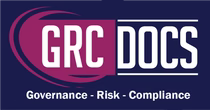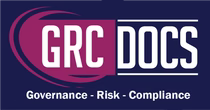SOC2 Disaster Recovery Plan Template Download
Introduction
Disasters whether natural, technical, or human-made pose significant risks to the continuity of business operations. A Disaster Recovery Plan (DRP) provides a structured roadmap to recover critical systems, protect essential data, and restore operations quickly and efficiently. This plan ensures that organizations minimize downtime, comply with regulatory requirements, and safeguard both reputation and stakeholder trust. By applying the DRP step by step, businesses can build resilience, ensure availability of critical services, and respond effectively to disruptive events.

Step-By-Step Guide For Using the Disaster Recovery Plan
Step 1: Define Scope and Applicability
-
What to do: Ensure the DRP covers all staff, contractors, consultants, visitors, and third parties who interact with organizational systems and data.
-
Why it matters: A clearly defined scope ensures that all potential actors in disaster situations are accounted for, reducing confusion and risk during recovery.
Step 2: Assign Roles and Responsibilities
-
-
Management: Oversee implementation, allocate resources, and ensure compliance.
-
IT Department: Manage backups, security, and technical recovery.
-
Employees: Follow procedures, maintain confidentiality, and report issues.
-
-
Why it matters: Defined responsibilities guarantee coordinated and efficient disaster response.
Step 3: Establish Disaster Recovery Committee (DRC)
-
-
Form a committee of representatives from different departments.
-
The DRC oversees DRP development, testing, and activation.
-
Appoint a Crisis Management Team (CMT) to handle emergency situations.
-
Maintain a list of backup personnel to replace unavailable members.
-
-
Why it matters: A cross-functional committee ensures strategic oversight and operational continuity.
Step 4: Identify Disaster Recovery Objectives
-
Set clear objectives:
-
Notification procedures during a disaster.
-
Assessing and minimizing risks.
-
Documenting and testing recovery procedures.
-
Safeguarding critical information and systems.
-
-
Establish timelines: RTO (Recovery Time Objective) and RPO (Recovery Point Objective).
-
Why it matters: Objectives guide the recovery process and define acceptable downtime and data loss.
Step 5: Prepare Disaster Recovery Prerequisites
-
-
Maintain an updated inventory of critical systems and records.
-
Identify supply chain dependencies and critical infrastructure.
-
Document communication strategies for internal and external stakeholders.
-
Implement contingency and mitigation strategies.
-
Store backups securely both on-site and off-site with redundancy.
-
-
Why it matters: Preparation minimizes disruption and improves resilience against disasters.
Step 6: Recognize Disaster Scenarios
-
-
Classify disasters into natural events (floods, earthquakes, fire) and IT disasters (system outages, ransomware, cyberattacks).
-
For natural disasters: focus on evacuation, safety, and relocation.
-
For IT disasters: focus on restoration of systems, communication with teams, and customer updates.
-
-
Why it matters: Categorizing scenarios ensures tailored responses for different types of crises.
Step 7: Implement Backup and Recovery Measures
-
-
Perform regular backups of all critical data.
-
Use both primary and secondary communication channels to maintain operations.
-
Ensure corporate laptops and remote work systems are configured with secure failover capabilities.
-
-
Why it matters: Reliable backups and recovery systems reduce downtime and protect data integrity.

Step 8: Establish Communication Channels
-
-
Define a primary communication system (e.g., corporate chat or collaboration tool).
-
Maintain alternative methods (phone, SMS, email) in case of failure.
-
Notify key stakeholders immediately for high-severity events.
-
Duplicate communication to ensure all parties are informed.
-
Why it matters: Clear communication ensures transparency, coordination, and stakeholder confidence.
-
Step 9: Conduct Risk Management Activities
-
-
Perform bi-annual risk assessments focused on disaster scenarios.
-
Identify vulnerabilities in systems, processes, and supply chains.
-
Develop risk mitigation strategies based on findings.
-
-
Why it matters: Proactive risk management prevents repeat disruptions and strengthens preparedness.
Step 10: Strengthen Security and Access Control
-
-
Deploy firewalls, intrusion detection, and regular security audits in line with ACSC and NCSC guidance.
-
Apply physical security measures to safeguard hardware storing critical data.
-
Enforce least privilege access control for sensitive systems.
-
Maintain audit trails for monitoring.
-
-
Why it matters: Robust security ensures data integrity and prevents further vulnerabilities during recovery.
Step 11: Test and Maintain the DRP
-
-
Conduct annual DRP testing (walkthroughs, simulations, or full-interruption tests).
-
Document results and close any gaps identified.
-
Update the DRP annually or after significant organizational changes.
-
Keep team contact lists and responsibilities up to date.
-
-
Why it matters: Testing validates the plan, while regular maintenance ensures ongoing relevance.
Step 12: Ensure Compliance, Training, and Awareness
-
-
Align DRP with Australian and New Zealand Telecommunications Acts and data protection regulations.
-
Train staff regularly on disaster recovery procedures and regulatory requirements.
-
Conduct awareness campaigns to reinforce the importance of DRP.
-
Document exceptions and approve them at a senior management level.
-
-
Why it matters: Compliance ensures legal adherence, while training builds a culture of resilience.
Conclusion
The Disaster Recovery Plan provides a structured framework for preparing, responding, and recovering from disruptive events. By following these twelve steps—defining scope, assigning responsibilities, establishing committees, setting objectives, and ensuring strong security, backups, testing, and compliance—organizations can minimize downtime, protect critical data, and restore business operations swiftly. Equally important, training and communication ensure that all staff understand their role in recovery.





